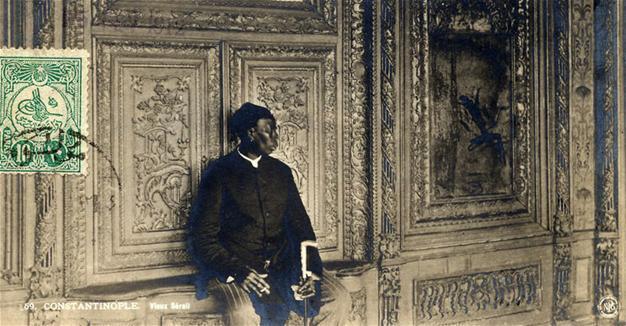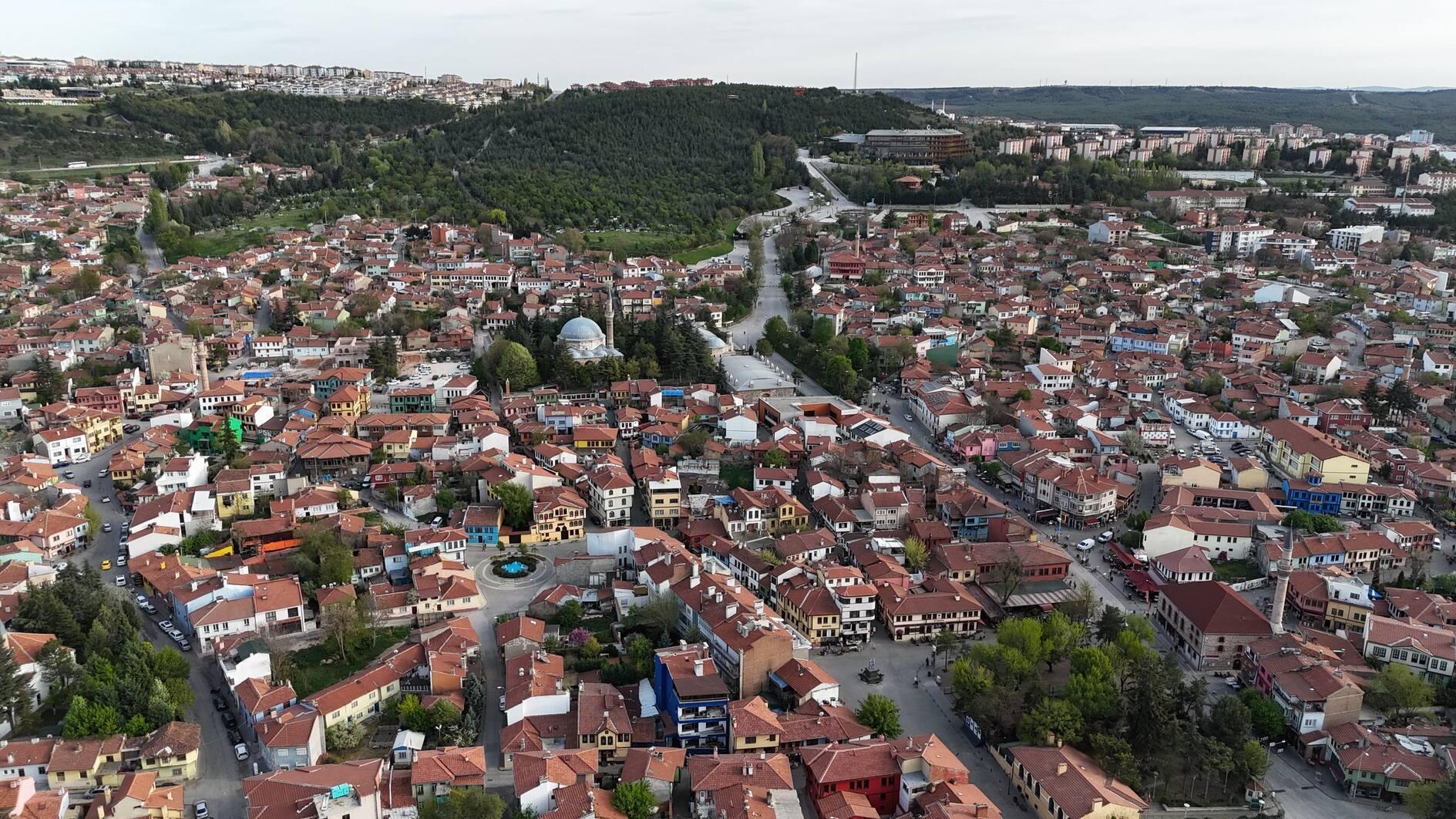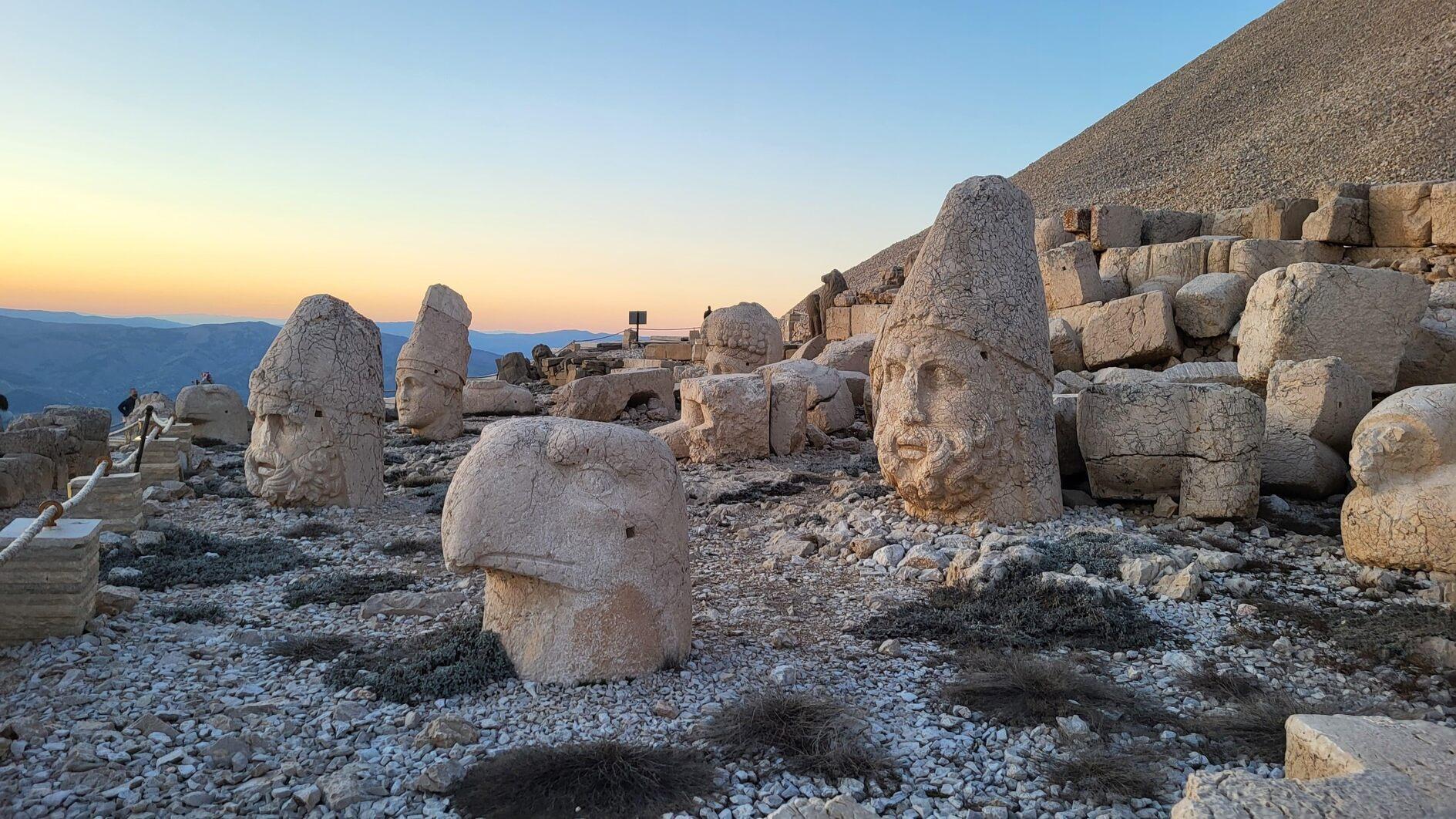INTERVIEW: George Junne on black eunuchs and slavery in the Ottoman Empire
William Armstrong - william.armstrong@hdn.com.tr

The subject of slavery in the Ottoman Empire, and the use of eunuchs among the imperial elite in Istanbul, is an exotic but surprisingly little known subject.
“The Black Eunuchs of the Ottoman Empire: Networks of Power in the Court of the Sultan” by University of Northern Colerado professor George Junne breaks new ground. The book, released earlier this year (and reviewed in HDN here), is the most detailed study to yet appear in English of Ottoman eunuchs - important centers of power for many centuries but still something of an enigma.
Junne spoke to the Hürriyet Daily News about the key role that eunuchs played in the Ottoman state, the broader question of slavery in the empire, and how the image of eunuchs changed during the dying years of the empire and in the transition to the Turkish Republic.
Slavery in the Ottoman Empire was very widespread but it took various forms and it relied heavily on local conditions. How did Ottoman slavery compare, for example, with the transatlantic slave trade?
If you’re taken as a slave, no matter in what slave system, you’re completely separated from your family and friends and you’ll never see them again. In the Ottoman Empire, the slight difference was that the Ottomans took slaves from Europe, as well as from Africa. So there was always a chance, even though slight, that some of the European slaves would be able to get in contact with their relatives.
It’s not that one system was better than the other - it was horrifying for everyone caught up in it - but you can see some differences. For instance, the Ottomans, as opposed to the Atlantic slave trade, evaluated the Africans they took in. They found that some had management skills, or others had musical skills, and so on. In the Atlantic slave trade to the United States, the Caribbean, and Central South America, the slaves were usually just put out to work in the field. In the Ottoman Empire they had some slaves working in fields and mines, but for many of areas around Istanbul and other major cities they also worked in people’s houses.
The book focuses on the black eunuchs of the Ottoman court. Up until the end of the 16th century the Ottoman court had been dominated by white eunuchs from the Christian populations of the Balkans and the Caucasus. But the black eunuchs rose to prominence at the end of the 16th century. What was behind that shift?
The white eunuchs had a lot more control over the sultan and the government. Many of them had family relatives, so they could start opposition to the throne or against certain people in the empire who were incontrol. Of course, neither white nor black eunuchs could have children, but the European eunuchs were able to form groups here and there, sometimes with family members, that could become a rival to the sultans. The African eunuchs couldn’t do that, as they were completely cut off from their families.
The sultans started to use black eunuchs in the latter part of the 16th century when the white eunuchs became too powerful and corrupt. The African eunuchs, because of their distance from relatives and family, had an almost symbiotic relationship with the sultan: Everything they had depended on the sultan, and the sultan depended on them to assist him.
You talk in the book about how the Ottoman practice of eunuch-making and the institutionalization of it was one of the many customs inherited and adapted from the Byzantine Empire.
The Ottomans took what they saw as the best ways of governing and put them in place. They also inherited the seclusion of women from the Byzantines, though others were doing it too. The system of eunuchs was inherited from the Byzantines, as was the sequestering of royalty, and also the implementation of separate women’s apartments at home. They inherited things from the Byzantine system, tweaked it, and made it work for them.
The book contains some gruesome descriptions of various brutal castration procedures. Only a fraction of those castrated as potential eunuchs actually survived and were able to become court eunuchs in the end.
That’s true. Eunuchs were the most expensive of the slaves because sometimes the death rate in the castration process could be as high as 90 percent.
The main difference between the white eunuchs and the black eunuchs is that with the white eunuchs they just took out their testicles. With the black eunuchs they were completely “shaved,” meaning that everything came off. There were so-called “eunuch factories” to do this. One was in Ethiopia and others were scattered around. The Prophet Muhammad forbade Muslims from making eunuchs, but they got around this by purchasing boys from Christians and Jews.
With the black eunuchs, these boys would be wandering around in their homes in Africa when suddenly people would jump out of the bushes and drag them off across the Sahara to make them eunuchs. Many of them ended up in the Ottoman Empire. There, if you were considered to have a lot of talent you had a chance to rise. You could even enter the sultan’s palace or household. If you didn’t do that, in Istanbul there were a lot of very rich men who had their own personal harems, where other eunuchs would work. At any one time there were probably over 1,000 eunuchs in the Istanbul area alone.
Even after they became eunuchs, some of them actually got married as adults. They couldn’t have children but some of them actually did have a sex life, even though they did not have the necessary equipment.
The black eunuchs in the imperial harem over centuries amassed extraordinary power and authority, with extensive connections and responsibilities. Could you outline the responsibilities of the chief black eunuch, what did they do and what influence did they have over the empire?
The chief black eunuch was just one of up to 200 eunuchs in the royal household. They were in charge of pretty much everything that went on in the harem: Keeping the household together, making sure the food was brought in for the sultan and his family, working on different pacts for peace and war. They were in charge of the caravans that went to the holy cities of Mecca and Medina, making sure goods, money and oil got there. They also built fountains around the city, because back then there wasn’t a lot of good water. The chief black eunuch built a mosque near the Topkapı Palace in the 1700s that is still being used today.
After they got fired, if they didn’t get killed, they were sent to Egypt, where they were responsible for taking care of all the money the sultan had. There was one eunuch who had three shiploads of his own personal items sent with him when he went to Egypt.
From about 1645 to 1760s the city of Athens was actually under one of the eunuchs, with all the officials there reporting to that eunuch. So we’re talking about people who in today’s money would be worth millions of dollars. But you have to remember that all the eunuchs were still slaves of the sultan, so after they died or were fired the sultan took back everything the eunuchs had amassed.
Despite this prominence we barely know the names of any of the chief black eunuchs. How did you find details of their experiences in the sources? Were there any sources that were particularly striking?
I had to do a lot of running around. In the acknowledgement page I mention some libraries around Istanbul, including the library at Boğaziçi University, that I had to go to. It was tough. Sometimes I’d spend a day working just to get two sentences. The information was not hidden but it was scattered. But I’d keep at it. It was difficult but every time I unearthed something I was ecstatic.
Two young graduate students are now pursuing this work. I don’t doubt there’s a lot of information out there that I don’t even know exists. I look at my book as a kind of jumping-off point. Hopefully there will be other researchers who can find more details and other documents.
The book describes this world of court eunuchs and dwarves walking around the harem. There are times when you really just sit back and think: “My word this really was a completely different world.”
You have to understand that the sultans, according to the people around them, walked in the shadow of God. Technically everyone in the empire was a slave of the sultan. But to be the person right next to that power - the chief black eunuch - who has 24/7 access to the sultan, gives you a lot of power. This guy was right beside the sultan, advising him. He had his own network of spies and was in charge of the 200 other eunuchs in the palace.
Towards the end of the empire, and in the era of the Turkish Republic, the eunuchs came to be seen as a kind of embarrassing relic of a backward age. How did the popular image of the eunuchs change over this time?
The embarrassment part is real. The system that Atatürk put in place got rid of things like the harems and the eunuch system. They were trying to become more European.
Toward the end of the empire, there were a lot of people outside the sultan’s household who were very jealous of the reign of the black eunuchs. They did not like the fact that they didn’t have the same access to the sultan.
The perspective of European tourists in the Ottoman Empire was also important. They would see these black men with power and could not understand it. The Europeans wrote back about this ugly situation in the Ottoman Empire, where these black guys were almost ruling over the sultan. How on earth could the Ottomans let these black people be so high in power?
So there were a few things going on at the same time: Internal jealousy, external racism, and also the fact that the Turks were trying to modernize and move away from something that people like Atatürk saw as a despicable part of their history.
*Follow the Turkey Book Talk podcast via iTunes here, Stitcher here, Podbean here, or Facebook here.
















